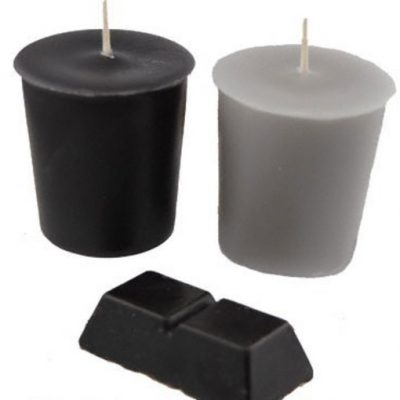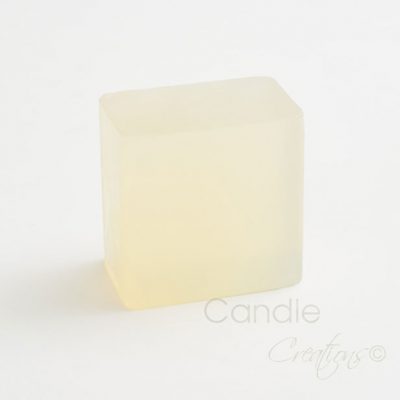
This blog is part of our series of reports from the World Candle Congress 2022
If you are are making and selling candles (be it your main business or a part time hustle) you’ll no doubt be well aware of the ongoing price rises for soy wax over the last 24 months. It’s like watching the price of petrol or avocado’s soar; and like these comparisons, the actual price we pay is heavily influenced by a number of external factors that are totally out of our control.
If you are selling soy candles for a profit, chances are you are constantly faced with the decision to increase your prices, reduce your costs, or take less margin. As the largest supplier of Soy Wax in New Zealand we feel that pain at Candle Creations too; believe me when I say none of this high price translates to high profits for us, quite opposite in fact! We strive to support the New Zealand candle making industry (as we have done since 2010) and, right now, that means a difficult juggling act between remaining profitable (and staying in business) and ensuring that you, our customers, can continue to do the same.
Back in 2020 I wrote a blog explaining what the main external factors are that affect soy prices, but little did we know that we were in for a whole new set of global pressures that would take the price beyond what even I predicted back then.
I’ve just returned from the World Candle Congress in New Orleans and one of the many informative seminars I attended was focused on the global supply of wax; what is driving the price up? Is it COVID-19, is it the war in the Ukraine? Where will it end? In this blog I’ll boil all of that information down and explain how it affects us here in New Zealand, where I see things heading and what steps you could take (in terms of your own business) to minimize the impact.
There are three main drivers impacting the price of soy wax in New Zealand, global demand, supply, and sourcing costs. Let’s dive into it!
Soy crops – where is all the increased demand coming from?
The demand for soy crops and the products they are used for continues to grow. Very little of the global supply of beans is used for candle making, most of the crops are consumed as either food or fuel. On the food side there is a tremendous amount of soy consumed in farming as well as in our own food products. Right now the demand from farmers for soy “meal” to feed their live-stocks is high.
The demand for bio-diesel is also at record levels and these fuels contain soy. Why is bio-fuel in such high demand? The war in Ukraine has put a major dent in the global supply of crude oil and natural gas, which have risen in price by 53% and 129% respectively so far this year! We are all seeing this at the pump that’s for sure! With a shortage of crude oil and increased demand for bio-fuels….more soy is being used for fuel.
Now let’s look at candle demand for soy; since the beginning of the COVID-19 pandemic the global demand for candles has increased significantly!
More people stayed at home burning more candles than usual, more people looked online and developed an interest in becoming candle makers (either a new full-time job, part-time, or as a hobby) and people were saving more money from not traveling or commuting so they were able to spend on things they usually didn’t purchase. In short, more than ever….people consumed candles!
Soy bean supply – can the market keep up?
Let’s take a brief look at paraffin
Before we dive into the supply side of Soy it’s worth noting what’s happening with paraffin. The majority of candles made today are, still, made from paraffin wax or a blend of paraffin with something else. If it says “Soy Blend” on the the label, that nice candle you are looking at is probably high in paraffin. Paraffin is a by product of the crude-oil refining process and there are big supply issues in this market. Many of the crude oil refineries around the world are either closed down, broken down, or destined to be in one of those categories sooner rather than later.
As the world reaches the end of the oil-era and transitions into bio-fuels and other sources of energy there is less investment in the refineries that can manufacture paraffin wax. China is now the only country actively investing in refineries solely dedicated to making paraffin wax; they have found a supply of crude oil that is perfectly suited to paraffin and they have built three refineries which they estimate they can meet the world demand for paraffin wax for at least another 20 years.
What does all of this mean for soy candles? With paraffin is also in short supply the price of this wax is also on the rise which has a flow on effect into the soy wax market.
Soy crop yields – some good news perhaps
 Reports from the major producers indicate that while there have been some challenges this season in the USA, crop yields for soy beans have been relatively good are not considered the main driver in the current high price of soy wax. In fact the good news is that the supply of soy beans may increase in the near future. Why? Because the soaring price of natural gas is having a side effect of sending the price of fertilizer through the roof. Farmers need to put nitrogen back into the soil that they currently grow corn on…..but the fertilizer is too expensive…..soy crops create nitrogen naturally so it is a better option to plant Soy for a season or two then to buy fertilizer. This will lead to increased crops of soy and eventually should see some relief to the soy bean price on the supply side. Isn’t it amazing how this is all connected?!
Reports from the major producers indicate that while there have been some challenges this season in the USA, crop yields for soy beans have been relatively good are not considered the main driver in the current high price of soy wax. In fact the good news is that the supply of soy beans may increase in the near future. Why? Because the soaring price of natural gas is having a side effect of sending the price of fertilizer through the roof. Farmers need to put nitrogen back into the soil that they currently grow corn on…..but the fertilizer is too expensive…..soy crops create nitrogen naturally so it is a better option to plant Soy for a season or two then to buy fertilizer. This will lead to increased crops of soy and eventually should see some relief to the soy bean price on the supply side. Isn’t it amazing how this is all connected?!
Crushing and refining capacity is limited!
Here’s one of the big contributors to the current price rises! The increased demand for soy products (including soy wax) means that more beans need to be crushed and refined. The problem is there are simply not enough crushers or refineries to cope with the increased demand. In the USA there is a serious shortage however investment happening right now to increase the capacity for crushing and refining. This is good news for us but we’ll need to wait until at least 2023 for these plants to come online. So, in the short term, the demand on crushing means that the refineries can charge more per kilo of crushed and refined oil.
Sourcing costs
Shipping
Just a month or so after I posted my original blog on soy wax prices we entered an unprecedented time in the history of modern sea trade. A global pandemic! At the start of COVID-19 many ships were displaced…they were stuck on the other side of the world and unable to sail due to pandemic restrictions. Then came the inevitable reduction in cargo when factories went into lockdown and barely any stock was shipping.
With huge uncertainty of future demand, the major shipping lines cut their sailings dramatically. At first they anchored their ships out to sea but eventually they went a step further, sending their ships to the scrap metal yard where they were now worth more as scrap metal than what they could earn at sea.
You see, the price of steel had also sky rocketed, yet another inter-connected commodity influencing the price of our wax!
So now we have a reduced shipping fleet and hundreds and thousands of displaced containers. Empty containers are not where they need to be, demand is increasing tenfold as pent up demand and e-commerce became a driver of increased production and the entire shipping industry in a state of perpetual imbalance. Hence we are dealing with soaring costs and frustrating delays.
The shipping component of a container of wax now costs 3 or 4 times what it was pre-COVID. This is adding around $25 per carton to the landed price of wax. It is expected that it will take until at least 2025 to stabilize the supply and demand for shipping back to pre-COVID levels.
Currency
Back in June 2014 the NZD peaked at 88 cents against the USD. That’s around the time we were able to sell you carton of wax for $99, imagine that! But here in June 2022 the NZD is languishing at around 63 cents, even pre-COVID we were sitting higher at around 73 cents….. that 10 drop of cents in the dollar makes quite a difference to our buying power. Forex is not my area of expertise but it seems that the NZD is expected to remain weak for the foreseeable future, depending on how the USA fares in what may be a looming recession.
What does the future hold for soy wax prices in New Zealand?
This all sounds like the perfect storm, a set of circumstances that has delivered wax prices the likes we have not seen before; a pandemic, a war, a shipping crisis, and a lack of capacity on the supply side. We are in for a bumpy ride for the next 12 – 24 months at least.
The good news is that supply of soy beans is expected to increase to meet demand once farmers switch from corn to soy crops in the coming season 2022/23. The crushing and refining capacity in the USA (and China) are set to increase too, so we should see an easing in the cost of refining the wax. The global shipping chaos is expected to ease by 2025 once shipping companies bring more (brand new and improved) ships on line and the imbalance of empty containers sorts itself out.
These factors should see a stabilizing and eventual easing of the price of soy wax. It will take some time for this pricing to flow through to the market so you can expect to see the price of soy wax remain high (perhaps even going up a little further) in the short to medium term.
Tips for managing your profit in the current market
The future might look a little better but it’s hard to ignore the fact that the price of soy is impacting all of our margins right now.
The good news is that, compared to fragrance, soy is the lesser cost of the raw ingredients to make a candle and fragrance pricing is relatively stable right now. A 100% increase in the price of soy is preferable to a 100% increase in fragrance! And we should remember that at the craft table or gift store, these rises add a few dollars to the finished product. A $25 candle can stretch to $29 more easily than some other products. We’ve seen even in recessionary times that demand for scented candles remains strong compared to other discretionary products.
My advice for those making candles as a business is to do your absolute best to maintain your margins…this means passing on the incremental price rises to your customers. If a price rise is beyond your comfort zone than you might also want to employ some of these marketing tips and strategies;
- Less is more – An alternative to putting up your price is to use less ingredients per candle. Chocolate and potato chip brands are good at this, instead of putting the price up they put slightly less chocolate in the block and a few less chips in the bag! I’m not suggesting that you deceive your customers, what I am saying is that with wax prices going through the roof you might struggle to increase the price of that huge treble wick candle…but consider adding a smaller jar to your range and introducing a new and affordable price point without impacting your margins/
- Design and style of jar – Take a look at jars that look stylish when half or 3/4 filled such as bowls, curved, and deco designs. This is another way to achieve the less is more effect.
- Buy in bulk – make sure you are getting the best possible rate per KG of wax by buying in the biggest pack size you can afford. 1KG of wax at the bag price costs twice as much as the carton price. So if you can, stock up and bulk buy.
- Look at all your other costs – can you make savings on printing, packaging, labels, etc.
- Add new products – if you don’t already, take a look at adding reed diffusers to your range, as well as car diffusers, soaps, melts, and other home fragrance products that you can make sell at potentially higher margin to offset a dip in candle margins.
I hope this has been an insightful account of the global soy wax situation at present and gives you the knowledge you need to make decisions in your own business. The price of raw ingredients will always be a major consideration and we will continue to bring you the best information we can.
Brian Simpson (owner and chandler at large)
Candle Creations
New Zealand







Fab article, thank you very much. I’m in the UK but we’re suffering 60% price increases in soy wax in less than 12 months, at least I have some idea why now!!! I just need to decide if I mega-bulk buy now (ie 3 or 4 22kg boxes) or just buy as I need it………..
Thanks for the tips. Great advise. Next time I’m in Auckland I will come for a visit. Lyn ‘Candles By Lyn’
Great information thanks Brian.
Great read. Thanks for the info Brian.